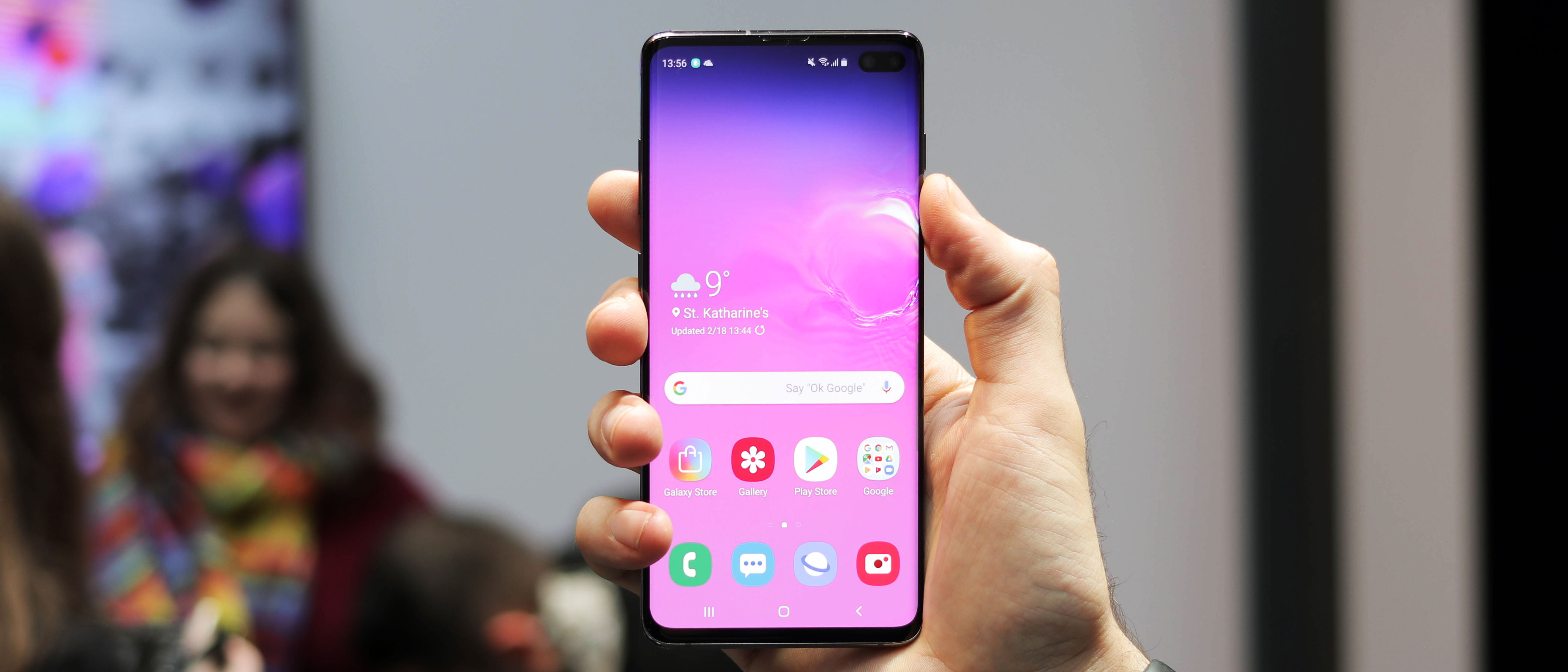Why you can trust TechRadar
Camera
The Samsung S10 Plus, like the S10, includes a robust triple-lens rear camera array, comprising a 12MP regular lens, a 12MP optically zoomed telephoto lens, and new 16MP ultra-wide lens. We've reached out to Samsung to confirm if the primary and telephoto sensors are the same as last year's Galaxy S9 Plus.
Using Samsung’s dual-aperture lens on the regular camera we were able to capture vibrant-looking photos and even fairly good low-light pictures. The quality isn’t always consistent (advice: take lots of the same photo), and it lacks something like Google’s dedicated long-exposure Night Vision mode, but it ranks among the best camera phones for 2019.
What Google doesn’t have on its main camera is the ability to shoot wide photos. Samsung’s ultra-wide lens has a 123-degree field of view, and it’s great for cramming more into the frame – so when you’re posing in front of tall buildings and iconic statues, whoever’s lucky enough to be taking your picture won’t be forced to cross the street in order to do so.

Be warned that the wide angle can result in a fisheye effect, which can distort the overall impact of the image, with people and objects towards the edges of shots appearing stretched compared to those in the middle.
However, the ultra-wide lens is stunning for sweeping landscape photos, and group shots if everyone’s tightly packed into the center of the frame to avoid the barrel-like warping.

Scene Optimizer returns with 10 new categories, enabling the AI to tell the difference between a cat and dog, for example, in order to fine-tune image settings.
We found it to be smart enough to recognize the main subject in a busy scene, and brighten things up a little as appropriate.
Shot Suggestions hints at how to fix photos using the phone’s neural processing unit (NPU). We found its real-time tips on leveling shots and framing subjects helpful, with an on-screen reticle to properly center group shots. Sure, its suggestions are at times way off, but for the most part it’s a helpful addition to the camera UI.

Live Focus has also been improved for the Galaxy S10 Plus, with Samsung’s portrait mode now offering a few different options. There’s still the standard background blur effect – the amount of which can be easily toggled with an on-screen slide – but there are now three other options.
Spin and Zoom offer different blur effects for a more arty shot, but it’s the final option, Color Point, which is our favorite. This keeps your subject in the foreground in color, while turning the background black and white.
It works well, and the results are striking – and you can also select this option when using the front-facing cameras, for striking selfies that allow you to ‘pop’ in color while the background is turned mono.

The front-facing cameras are 10MP and 8MP, with the latter coming into play for enhancing depth. This allows for better Live Focus portrait photos, and it’s exclusive to the S10 Plus variant of Samsung’s new phones.
Images from the front cameras look good in everything but low light, where things become soft-looking as the software attempts to aggressively smooth out the noise, although of course this is an issue that isn't limited to Samsung phones.
Video sees a healthy amount of upgrades in 2019. The S10 Plus can record in HDR10+, and offers Digital Video Stabilization on the rear camera.
Samsung says this is designed to make your Ultra HD video look as smooth as footage from an action cam, and while the handset doesn’t have the same durability, ti could rival the GoPro Hero7 Black.

Abbas has been living and breathing tech before phones became smart or clouds started storing data. It all started when he got his very first computer- the Sinclair ZX Spectrum. From computers to mobile phones and watches, Abbas is always interested in tech that is smarter and smaller because he believes that tech shouldn’t be something that gets added to your life- it should be a part of your life.
